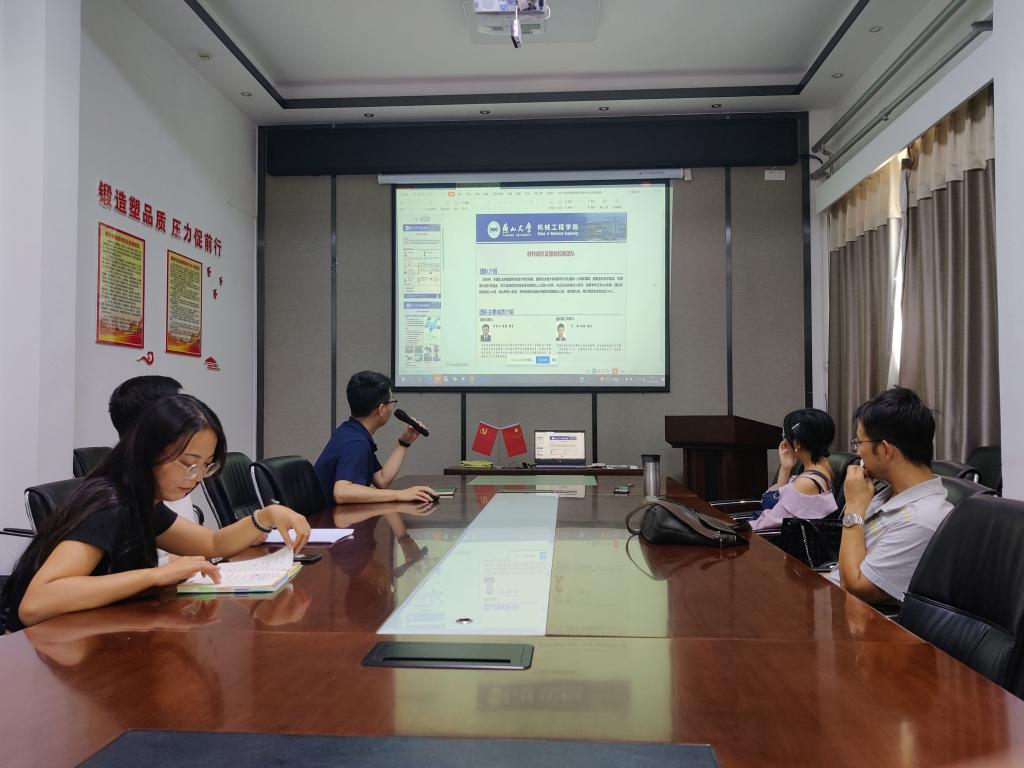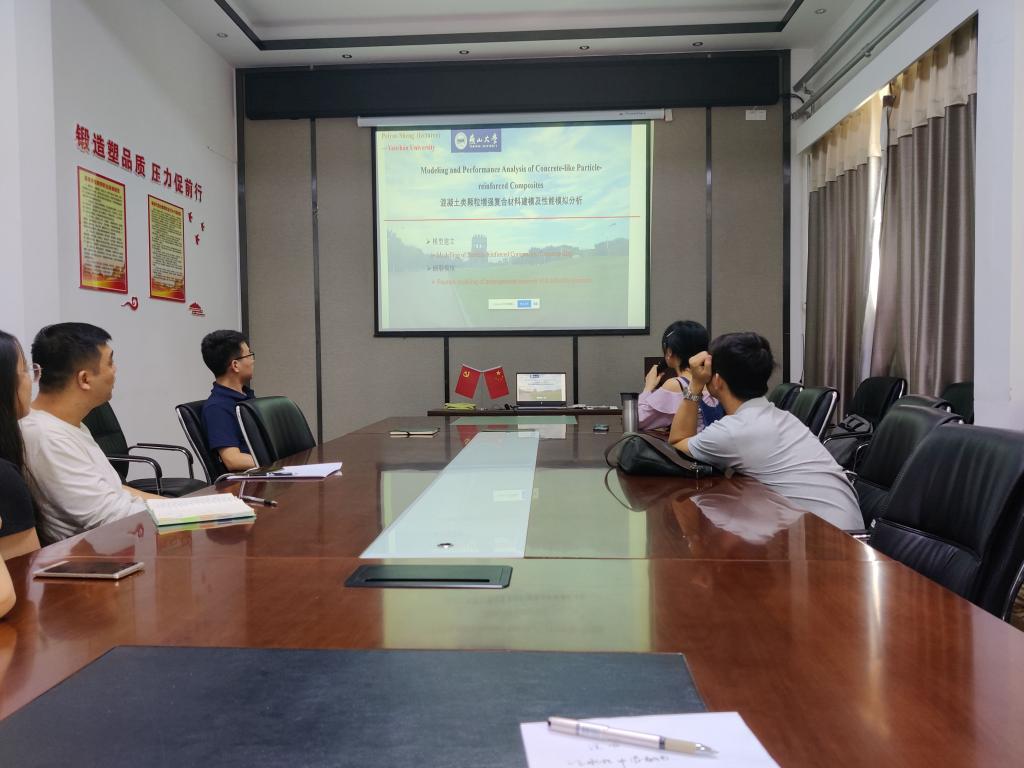Recently, the 2021 China-Japan Youth Online Science & Technology Exchange Program - Sakura Science Exchange Program was held in the Forging Conference Room of Yanshan University (YSU). Ma Rui, Yu Gaochao, and Sheng Peiyao from the material forming and intelligent control team of the School of Mechanical Engineering and several graduate students of YSU, as well as Assistant Professor Cui Yi from the School of Mechanical Engineering of Nagoya University (Japan) and his team’s researchers participated in this exchange event
Yu Gaochao introduced the general situation of YSU and the material forming and intelligent control team, as well as the development trends of the two strong disciplines, Mechanical Engineering, and Material Science and Engineering of YSU in recent years. In order to continue to carry out humanistic and technological exchanges in a pragmatic and efficient manner, it is hoped that the two sides will make an in-depth cooperation in talents training, international exchanges, and scientific and technological projects, laying a foundation for the establishment of an international cooperation base between the two universities.

Yu Gaochao introduces YSU and his team
Sheng Peiyao and graduate student Wei Sai made academic reports entitled Modeling and Performance Analysis of Concrete-Like Particle-Reinforced Composites and Structural Modeling and Simulation of Particle-Reinforced Metal Matrix Composites, respectively, to introduce the relevant report of the research on particle-reinforced composites and structure modeling. The report mainly includes “how to generate complex shape particle model, how to use establish a high-density composite material model by using “drop method”, how to conduct interface modeling using the particle surface expansion method, how to insert a cohesive unit into the material and perform fracture simulation using a self-written program”.

Sheng Peiyao gives an academic report
Cui Yi introduced the situation of Nagoya University and his laboratory team, and made an academic report on the topic of Mechanism of Material Transfer Caused by Dislocations in Nano Metal Materials. His research ranges from sparsely arranged nanopores to densely arranged nanopores. After the academic report, he introduced the life of studying abroad in Japan and Canada.

Cui Yi gives an academic report
Teachers and students from YSU and Nagoya University conducted extensive exchanges on scientific research, overseas study application and overseas study life. The atmosphere was good and the two sides ended the meeting happily.
Through this China-Japan Youth Online Science & Technology Exchange Program - Sakura Science Exchange Program, teachers and students have benefited a lot. It enhances the communication and understanding of science and technology between the two sides, and makes the academic exchanges between the two sides closer. The two sides look forward to the next cooperation.

Group photo at the exchange site
(The above picture is provided by the School of Mechanical Engineering)
Nagoya University is located in Nagoya City, Aichi Prefecture, Japan. It is a well-known research-oriented comprehensive national university. The university was founded in 1871 and now has 10 faculties, 15 research departments, 3 research institutes, 2 national joint research bases and 29 joint education and research facilities. Cui Yi, an assistant professor at Nagoya University, has been engaged in the field of mechanics and the behavior of voids in metal materials for many years, and has published more than 30 papers in international journals and conferences, such as Scripta Materiali, International Journal of Solid and Structure, Computational Materials Science, etc.
The Sakura Science Exchange Program is a Japanese national-level youth science and technology exchange program. The Japan Science and Technology Agency (JST) fully subsidizes the international travel expenses and accommodation expenses of all personnel. The program mainly invites students from Chinese colleges and universities and a small number of young teachers to Japan for short-term study visits and scientific research exchanges lasting one to three weeks. The program aims to provide Asian youth with short-term visits to Japan through close cooperation among industry, academia, and government, with scientific and technological exchanges as the core, so as to promote exchanges between Asian youth and Japanese youth in the field of science and technology. Excellent students of the program can be recommended to study for master's degree in cooperative universities in Japan. Due to the COVID-19 epidemic, the grassroots counterpart program exchange activities of the 2021 China-Japan Youth Science and Technology Exchange Program were conducted online.